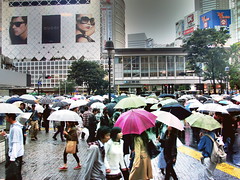 Six billion people. That's the current human population on Earth, and the highest ever reached as well. Things start to get cramped in the cities, while there is everywhere a noticeable depressing atmosphere due to having too many people around, whether that's in a traffic jam, in shops, at public services etc.
Six billion people. That's the current human population on Earth, and the highest ever reached as well. Things start to get cramped in the cities, while there is everywhere a noticeable depressing atmosphere due to having too many people around, whether that's in a traffic jam, in shops, at public services etc.
The number of six billion human lives would never have been reached if it wasn't for fossil fuels. The energy sent by the sun and received by the Earth every day could ever sustain more than two billion people. Fossil fuels combine a sort of energy saved below the surface of the planet, now extracted by humans to use this energy and cover their needs. And with all needs easily covered, humanity was and is able to rise in population.
But there is a great difference of four billion people between the number of humans the planet can sustain and the number of humans existing, a fact that has a bad impact on the Earth. Using fossil fuels releases huge amounts of carbon dioxide and other greenhouse gases in the atmosphere. And since there are so many people on Earth, there are more and more gas emissions. All this leads to global warming, climate change and pollution in general.
Even if overpopulation didn't cause environmental problems of that kind, there are other consequences to be taken into account. And that's because all these people need accommodation, private space, public areas and services, fields and farms to produce food. All this space needed is taken from ecosystems, mostly by deforestrating large areas. This act alone is enough to reduce the amount of oxygen produced by plants, and the space that natural habitats used to cover.
Recommended Comments
Join the conversation
You can post now and register later. If you have an account, sign in now to post with your account.